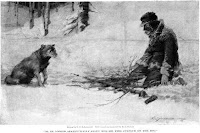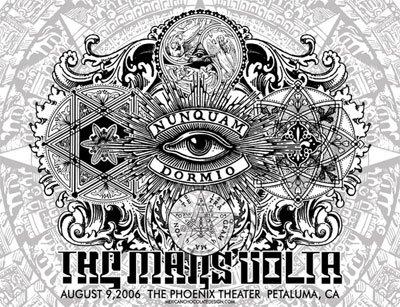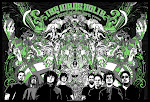

Well guys last week i saw this movie and it seemed to me WOW! and thinking about that. i give u the synopsis of the movie and i recommend it.
THE MARTYRS
Lucie, who has been missing for over a year, is found hysterical by the side of the road. She leads police to the derelict slaughterhouse where evidence suggests she was held captive. Although there is no evidence of sexual abuse, Lucie bears the signs of repeated injury and neglect. Traumatized and uncommunicative, Lucie is unable to tell the authorities anything further about her time in captivity or the people who kept her there.
Over time, Lucie makes friends with Anna, another girl in the youth home where she lives. Anna looks after Lucie and eventually gains her trust. Lucie appears to be haunted by something or someone - a shadowy, rasping female figure who apparently mutilates Lucie. After one such episode, Lucie makes Anna promise not to tell anyone about the creature haunting Lucie.
At this point, the film moves ahead 15 years, and shifts its attention to the Belfond family. Mom is fixing a sewer line in the yard, Dad is making breakfast, and son Antoine and daughter Marie are wrestling over a love note Antoine received. As everyone sits down to breakfast, the doorbell rings - it's Lucie, who shoots the father to death with a shotgun. The mother follows in short order, and then Lucie hesitates, asking Antoine how old he is and if he knew what his parents have done. When she doesn't get an answer, she kills Antoine. Marie hides upstairs, but Lucie finds her and kills her as well. After killing the family, Lucie's creature reappears and tries to attack Lucie. Lucie explains that she's "killed them", and so the creature can leave her alone now. The creature continues to attack her.
Panicked, Lucie calls Anna to come and help her. Anna, horrified, sees what Lucie's done and asks if she's sure these are the people who kidnapped her. Lucie is sure. Anna starts working on burying the bodies when Lucie has to deal with the creature again. In the process of moving bodies, Anna discovers that the mother is still alive and attempts to smuggle her out of the house. Lucie discovers this and beats the mother to death with a hammer. This is followed by one more attempt to placate the creature, as Lucie shows the creature that the mother is dead.
The creature embraces her gently, and begins to cut into her arms. Anna sees Lucie cutting herself - the creature is something Lucie is hallucinating. Flashbacks reveal that the creature is a woman who was being tortured in the same building as Lucie. When Lucie was able to escape, she had an opportunity to take the woman with her, but did not and has been haunted by it ever since. In a fit of rage and sadness, Lucie cuts her own throat.
Anna brings Lucie's body into the house, cleans it and wraps it in cloth. In cleaning up the house, she notices a hole in the wall behind a cabinet. Anna opens the cabinet and discovers a hidden staircase leading down. Anna discovers an underground complex decorated with pictures of people in extreme suffering. Exploring further, Anna discovers another woman, naked and chained to a wall with a metal blindfold riveted to her head. She frees the woman and takes her upstairs. Anna attempts to bathe the woman and she resists, and after Anna removes the blindfold, the woman runs off, finds a knife and begins to mutilate herself, attempting to cut off her arm.
As Anna tries to stop the woman, the woman is killed by a shotgun blast. A group of people have entered the house, and they take Anna down into the hidden complex. An older woman (referred to only as "Mademoiselle") explains to Anna that they are not interested in victims, but martyrs - the act of martyrdom brings about transcendence and the possibility of seeing into the afterlife. They are, in essence, creating martyrs through systematic abuse in the hopes of learning what lies after death from their accounts as they achieve transcendence. They kidnap young women because young women seem to be especially likely to achieve a transcendent state. Anna is then rendered unconscious.
Anna wakes up chained to a chair similar to the one discovered in the building where Lucie was kept. She is fed some sort of unpleasant gruel and methodically beaten. This goes on for several days until a badly battered Anna loses the will to resist. She hears Lucie's voice in her head, telling her that it is going to be okay, that she won't suffer much longer. Anna is then brought to an operating theater, where she is strapped into a rotating rack and flayed.
A now-skinless Anna is hung by a rack under hot lights. The people attending her remark on her considerable resilience, noting that she is still alive. The woman feeding Anna notices something about her has changed, and she calls Mademoiselle to tell her that Anna is close to transcendence. Mademoiselle hurries over and arrives in time for Anna to give her an account of what she had witnessed.
The next day, a large number of wealthy older people arrive at the house, and Mademoiselle's assistant (Etienne) announces that Anna - only one of four young women to successfully achieve martyrdom - was the first to provide an account of the world beyond life, and Mademoiselle was present to hear her account and would be sharing it with the assembled people shortly.
Mademoiselle appears to be getting ready as Etienne speaks to her through the door, asking if the announcement means that Anna saw something, and Mademoiselle says that she did, and it was clear and precise. Mademoiselle asks Etienne if he could imagine life after death. Etienne says he could not. Inside, Mademoiselle is sitting on the edge of a bathtub, where she takes a gun out of her purse. She calls to Etienne and tells him to continue doubting before shooting herself in the head.
The movie ends with Anna, lying in some sort of medicated bath in the underground complex, looking at something very far away, fading to black, and a definition of "martyr" which indicates the derivation from the Greek word for "witness."






